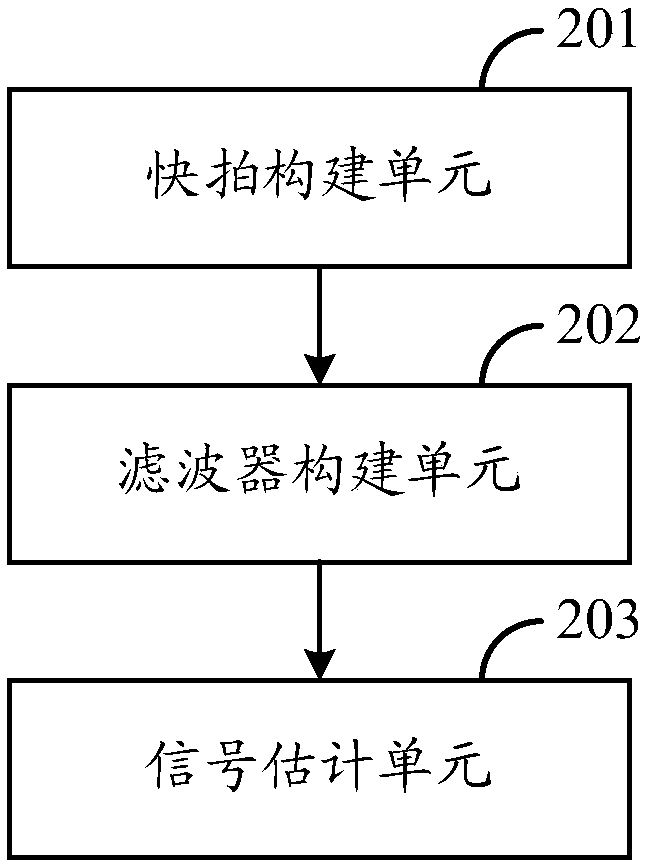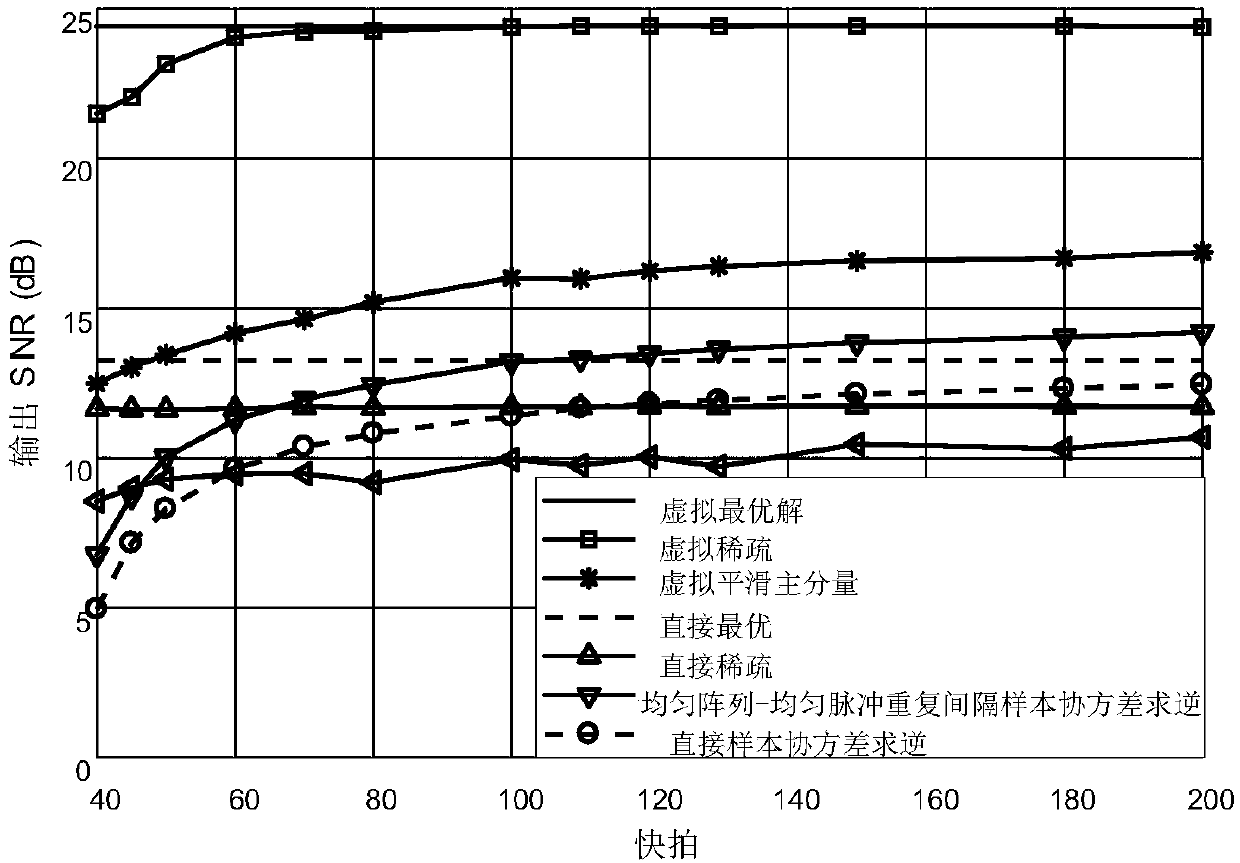Sparse-based space-time adaptive processing method and system
A space-time self-adaptive and processing method technology, applied in the field of signal processing, can solve problems such as inaccurate signal accuracy and inability to perform clutter suppression
- Summary
- Abstract
- Description
- Claims
- Application Information
AI Technical Summary
Problems solved by technology
Method used
Image
Examples
Embodiment Construction
[0084] In order to make the object, technical solution and advantages of the present invention clearer, the present invention will be further described in detail below in conjunction with the accompanying drawings and embodiments. It should be understood that the specific embodiments described here are only used to explain the present invention, not to limit the present invention.
[0085] figure 1 It shows a sparsity-based space-time adaptive processing method provided by an embodiment of the present invention, including:
[0086] S101, constructing a virtual space-time snapshot according to the space-time snapshot covariance matrix of the coprime array coprime pulse;
[0087] S102. Construct a sparsity-based space-time adaptive processing filter according to the virtual space-time snapshot;
[0088] S103. Perform clutter signal estimation according to the space-time adaptive processing filter to obtain a detection signal.
[0089] Below, the embodiment of the present inve...
PUM
 Login to View More
Login to View More Abstract
Description
Claims
Application Information
 Login to View More
Login to View More - R&D
- Intellectual Property
- Life Sciences
- Materials
- Tech Scout
- Unparalleled Data Quality
- Higher Quality Content
- 60% Fewer Hallucinations
Browse by: Latest US Patents, China's latest patents, Technical Efficacy Thesaurus, Application Domain, Technology Topic, Popular Technical Reports.
© 2025 PatSnap. All rights reserved.Legal|Privacy policy|Modern Slavery Act Transparency Statement|Sitemap|About US| Contact US: help@patsnap.com



